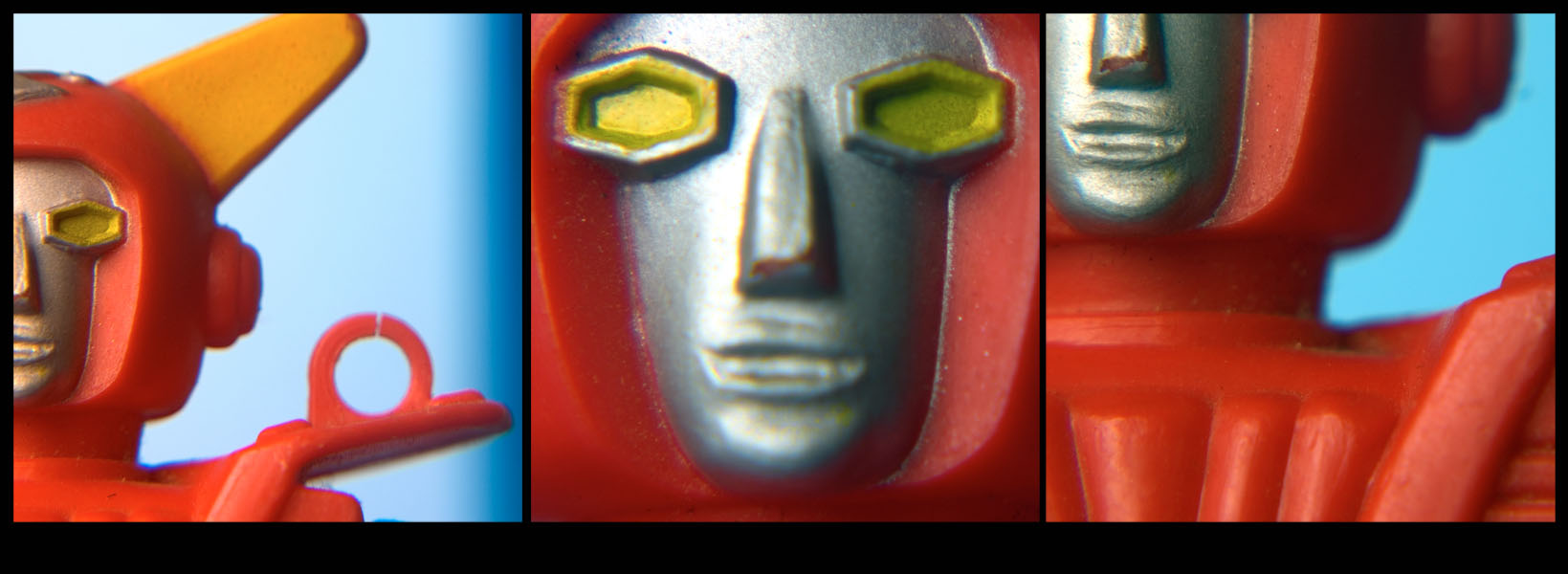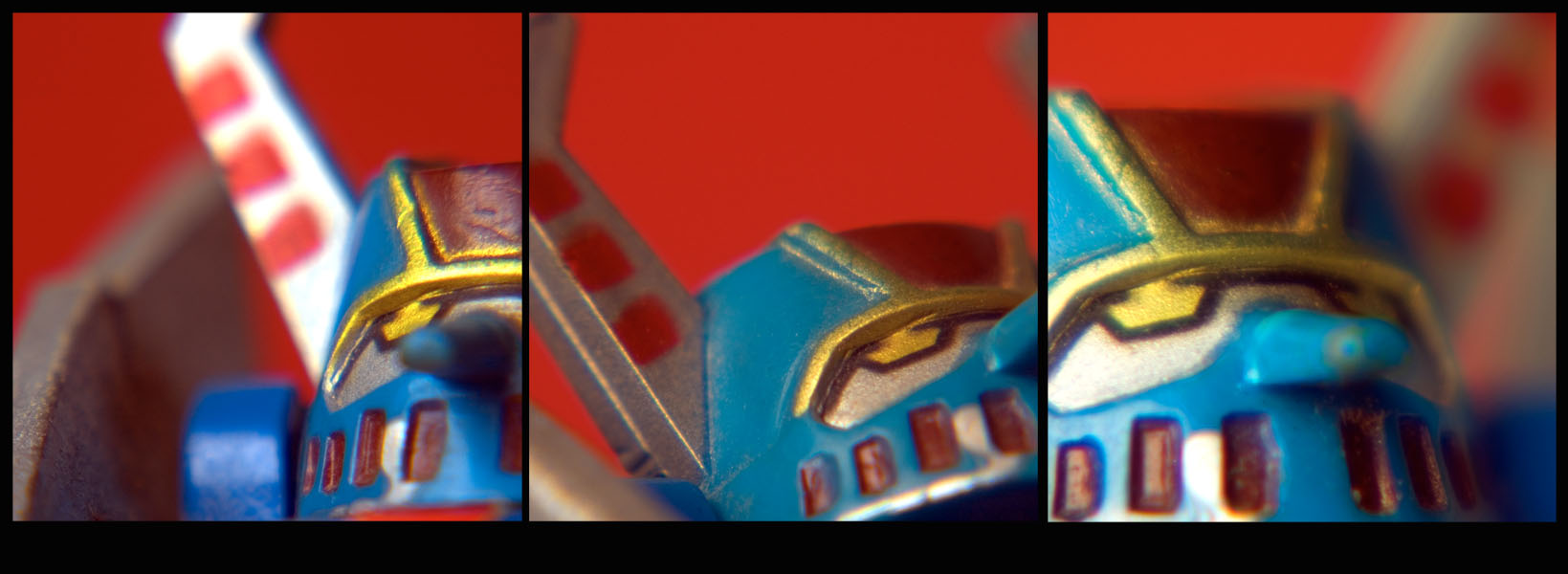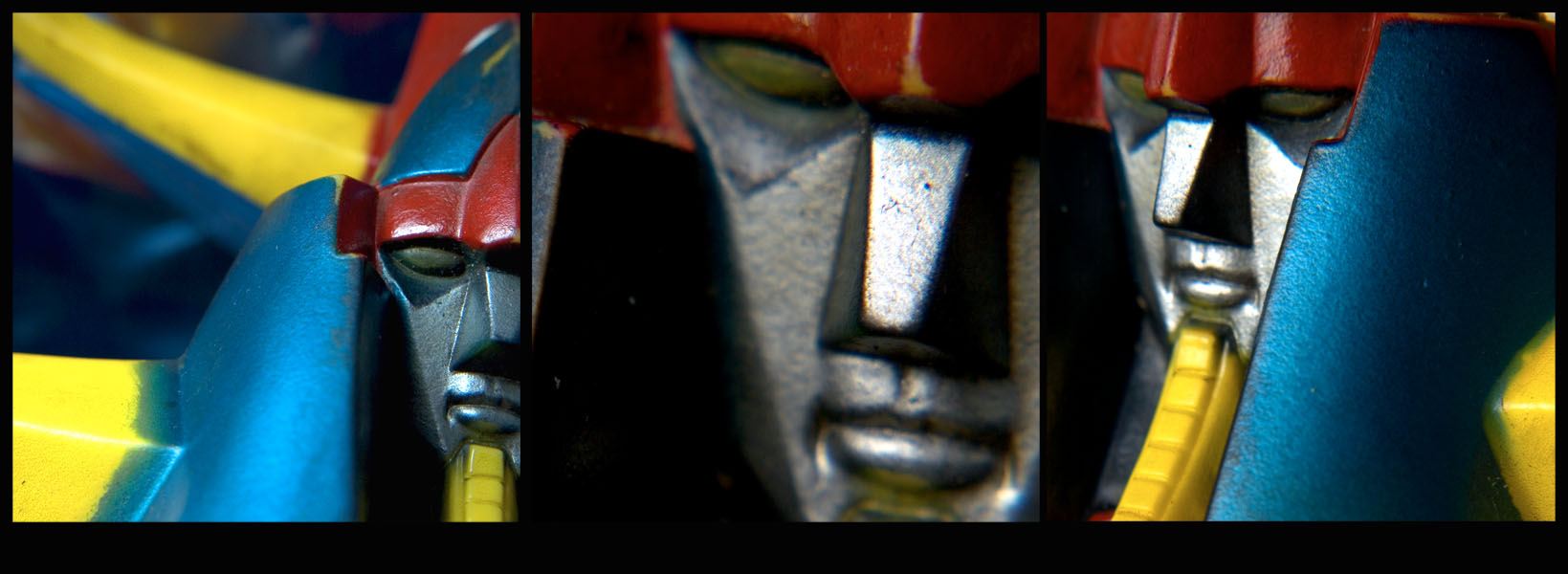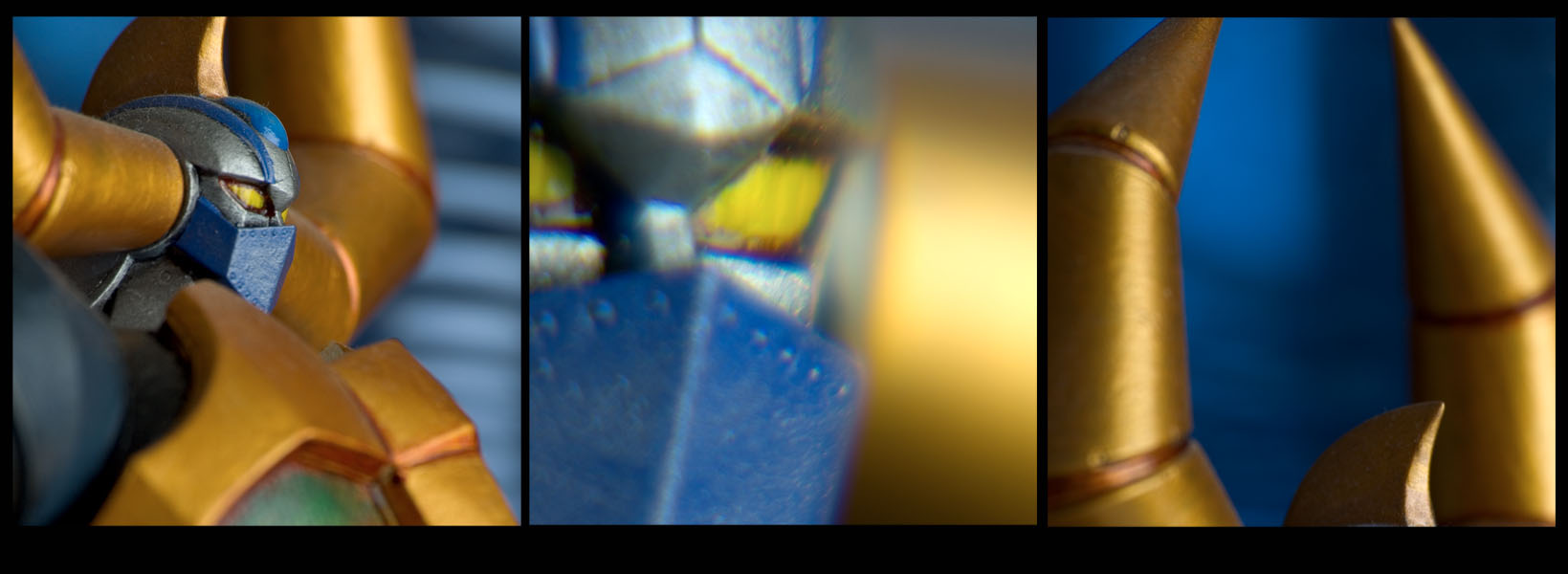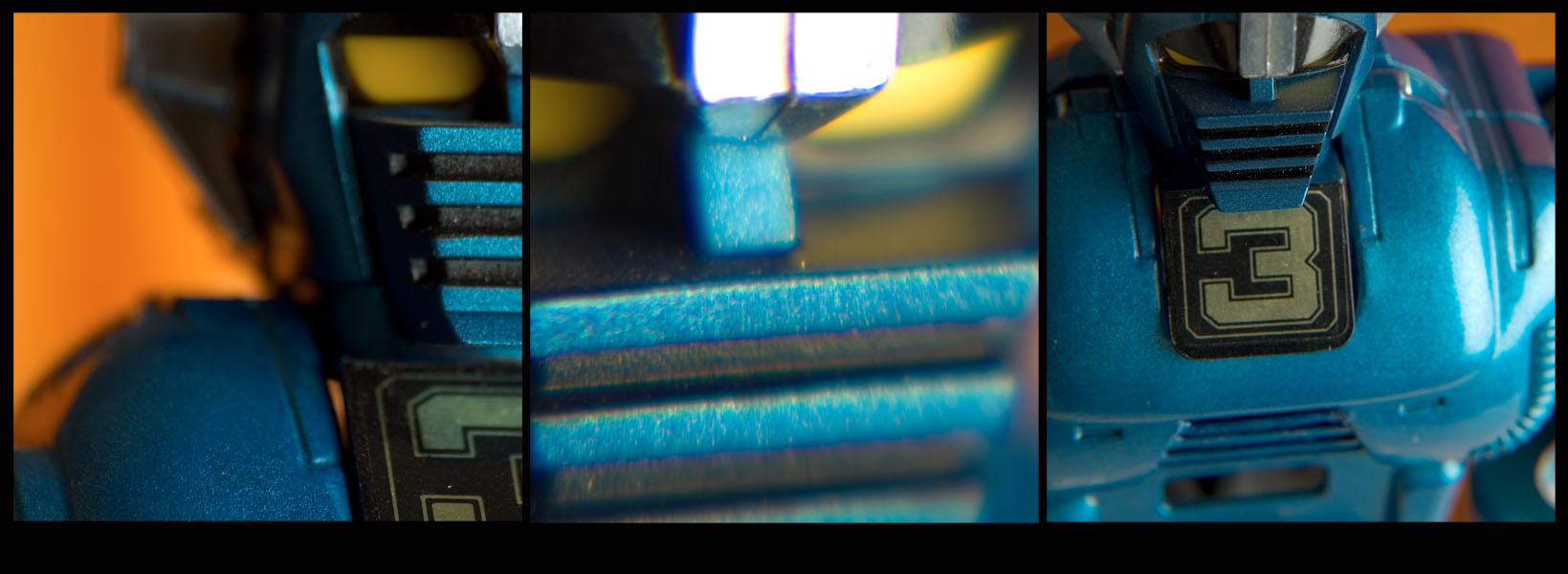This work is comprised of five photographic triptychs portraying toy robots from the 1970s that were stored in the basement of my house for many years but never forgotten. This work can be read at different levels :
–
The first level is a re-discovery of a beloved object. An attempt to give dignity, value and importance to something that was the most valuable thing to me for many years and in due course lost it’s original significance. Through the process of re-developing affection towards it, the material connotation of the artifact dissolves and becomes a symbol; virtually assuming a “transparency” of the spoken word and the significance of a relic.
–
A second level of interpretation is cultural, linking history to these robots. Toys that are the plastic incarnation of Japanese cartoon heroes produced between the 1940s and the 1970s. As Japan attempted to leave World War II behind them, they questioned the actual value of the honor, the use of technology and Western power and influence in their culture. The robots were conceived as powerful, gigantic body-forms enhanced by armor. They are partially inspired by the animal world and partially by the imagination of a futuristic world featuring ancient warriors. The relationship between the two inspirations is complementary, jointly embodying the “hero”. The Robots enveloped an almost “motherly” machine, and from its bowels, human beings regained control over a post-atomic world populated by machines.
–
The awareness of these two levels sent me on a quest in search of the humanity in the photographed subject. The portrait, in this case, acts as a probe as well as a “magnet,” a catalyst, pushing the human features of the structure towards the surface of the mechanical body. Searching for these traces of humanity also enables the viewer to look at the Robots with different eyes: those of the child who played with them.
